Okayama (10/5 ~ 10/8/2025)
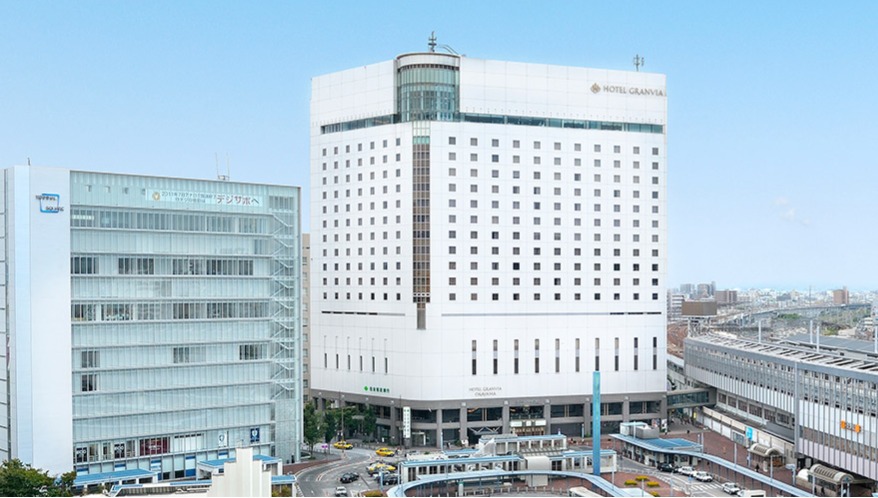
The white building is the Hotel Granvia Okayama.
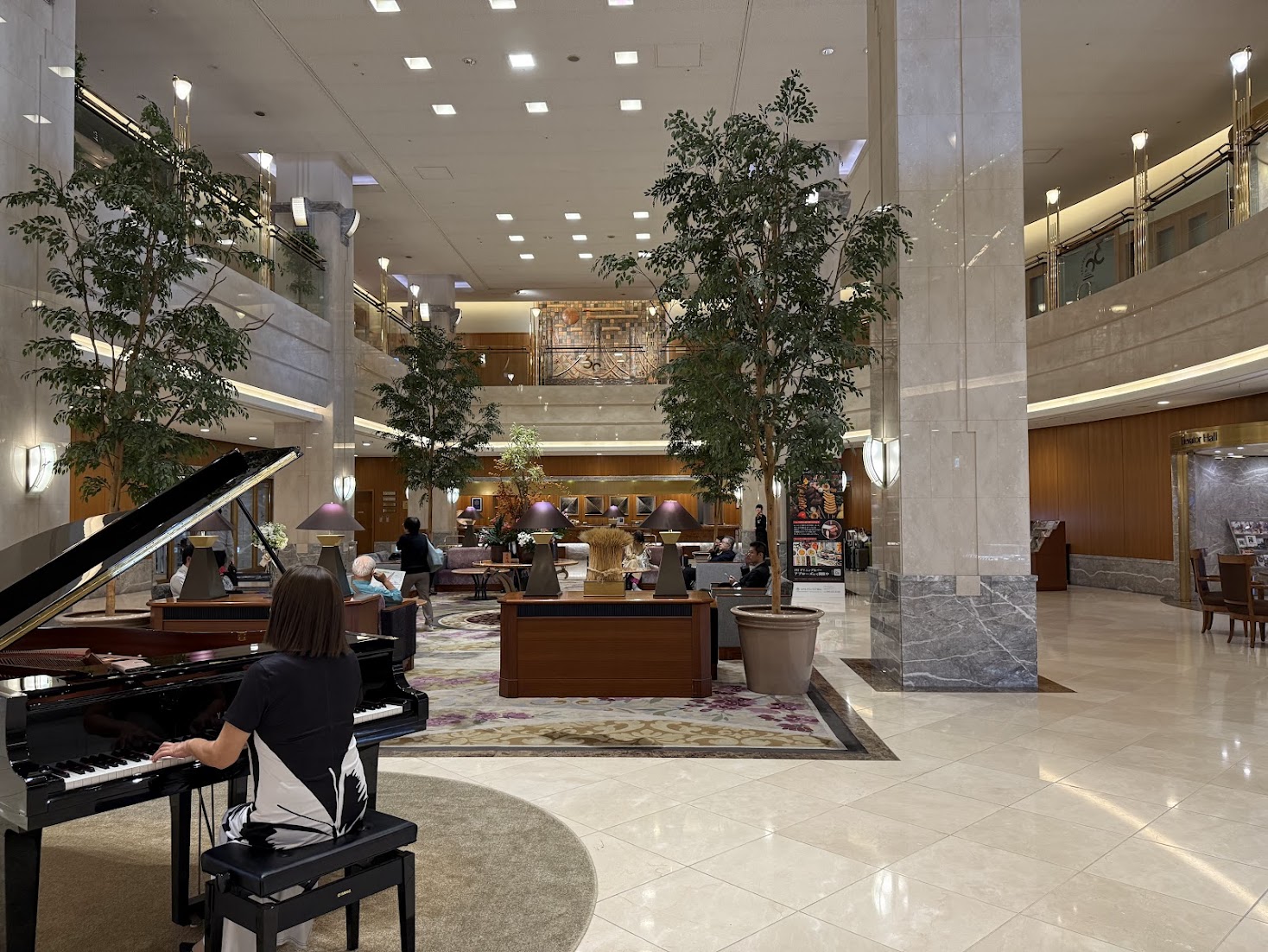
A female pianist plays popular songs in the hotel lobby during lunch hour.
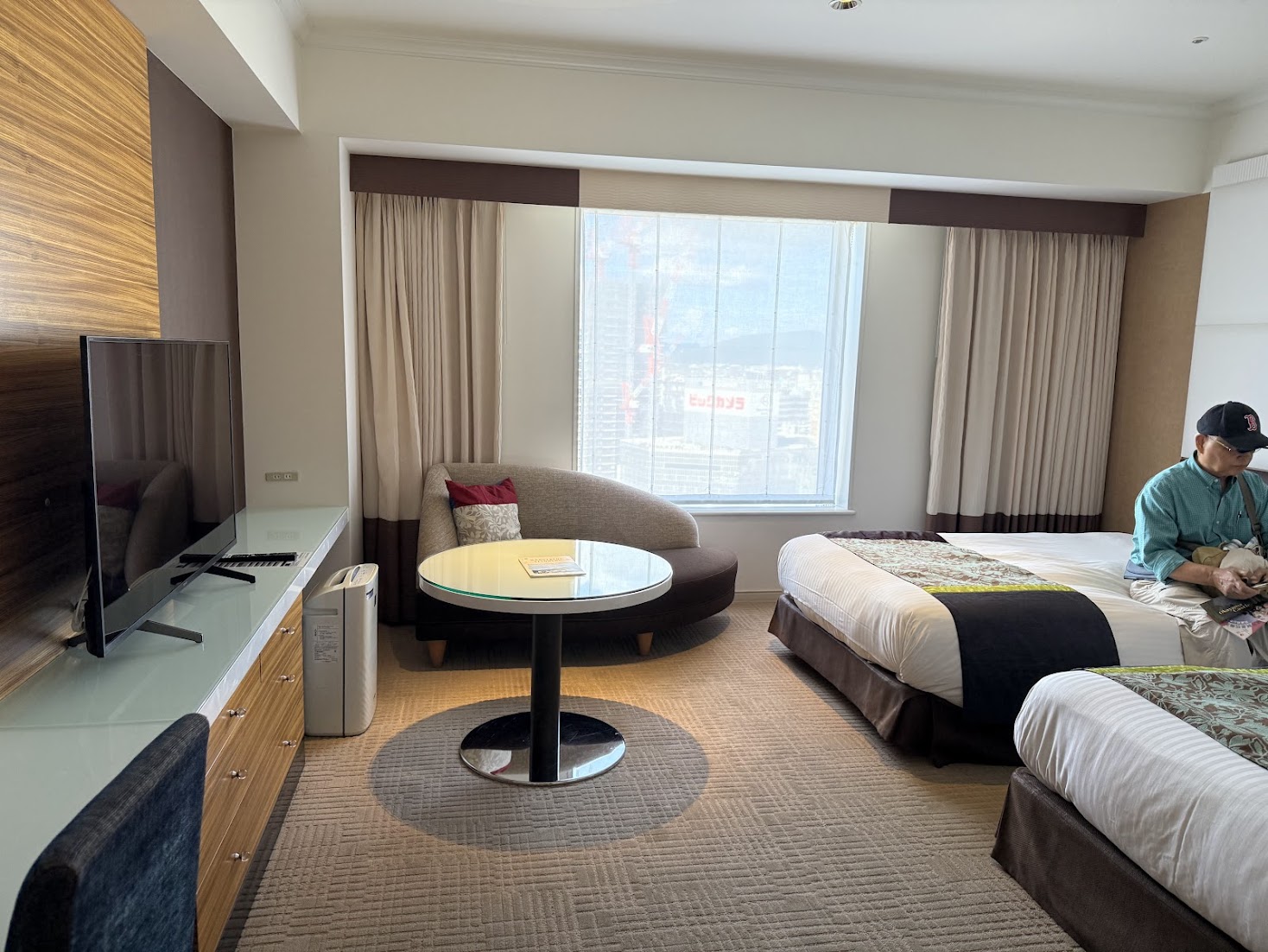
Our 344 sq.ft. Superior Twin room on the 16th floor.
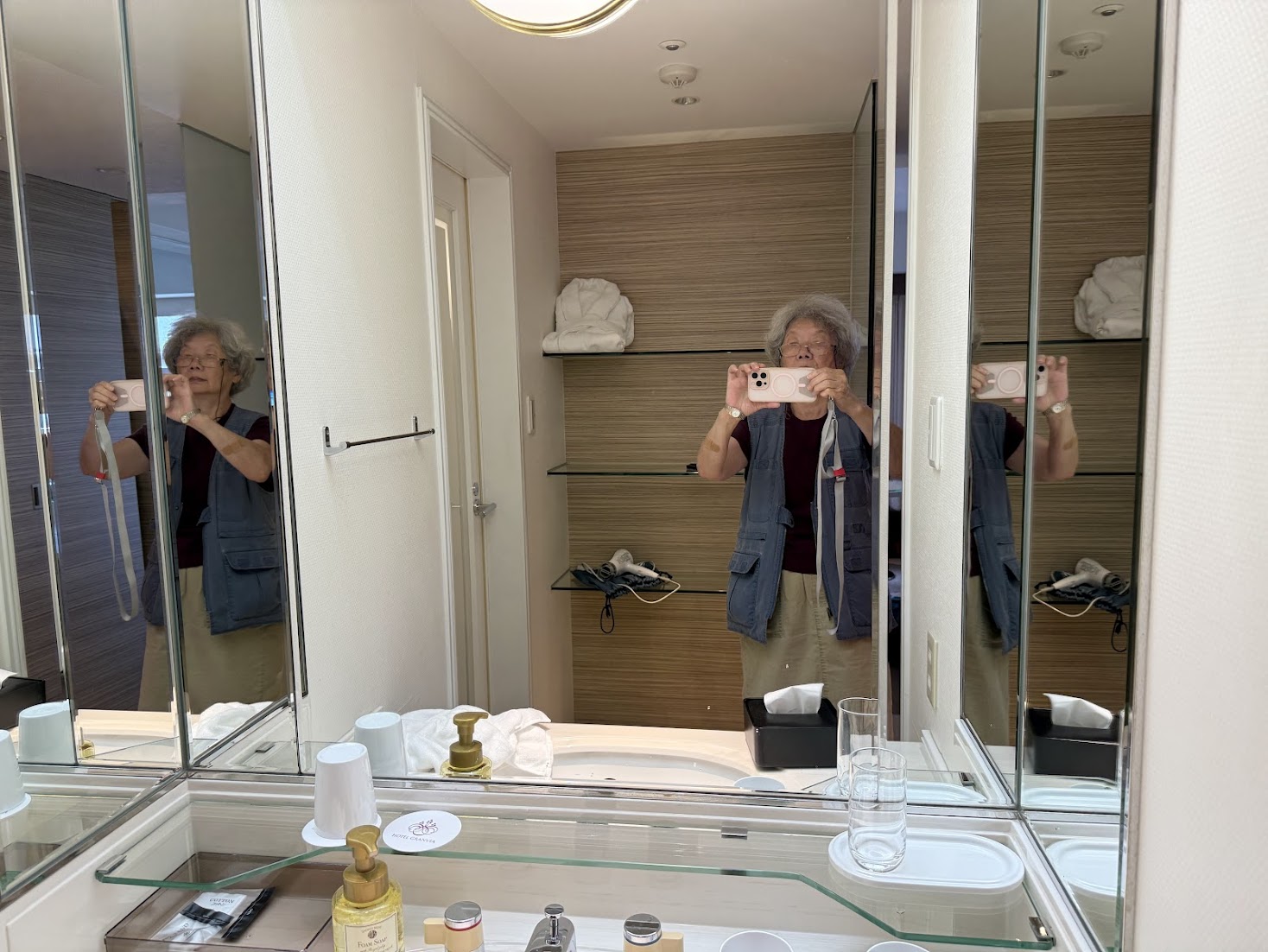
Three rows of shelf space (behind me) in the dressing area.
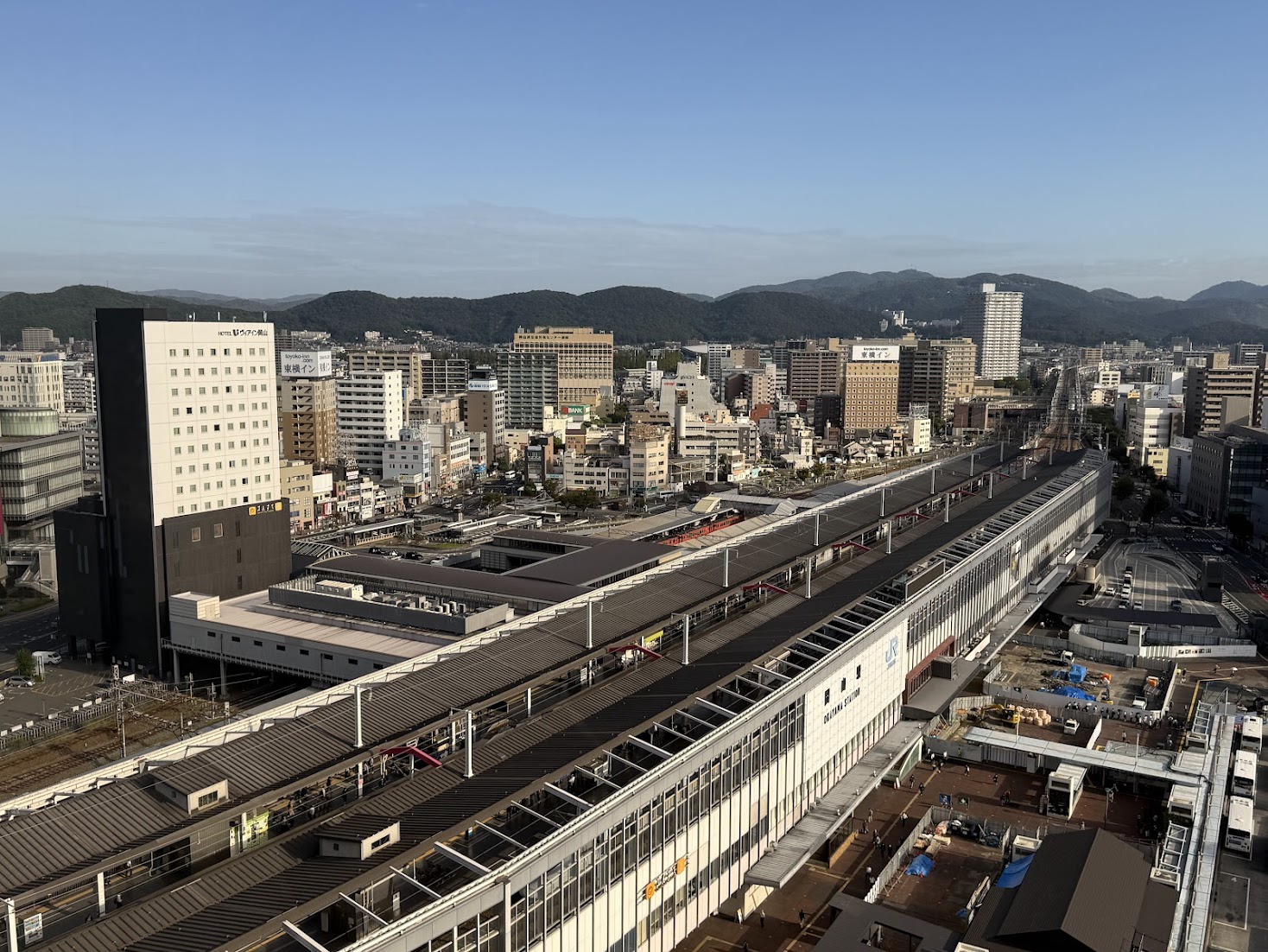
Views toward the train station and beyond from our room.

Glows from the neon outside served as a night light for our room after we went to
bed.
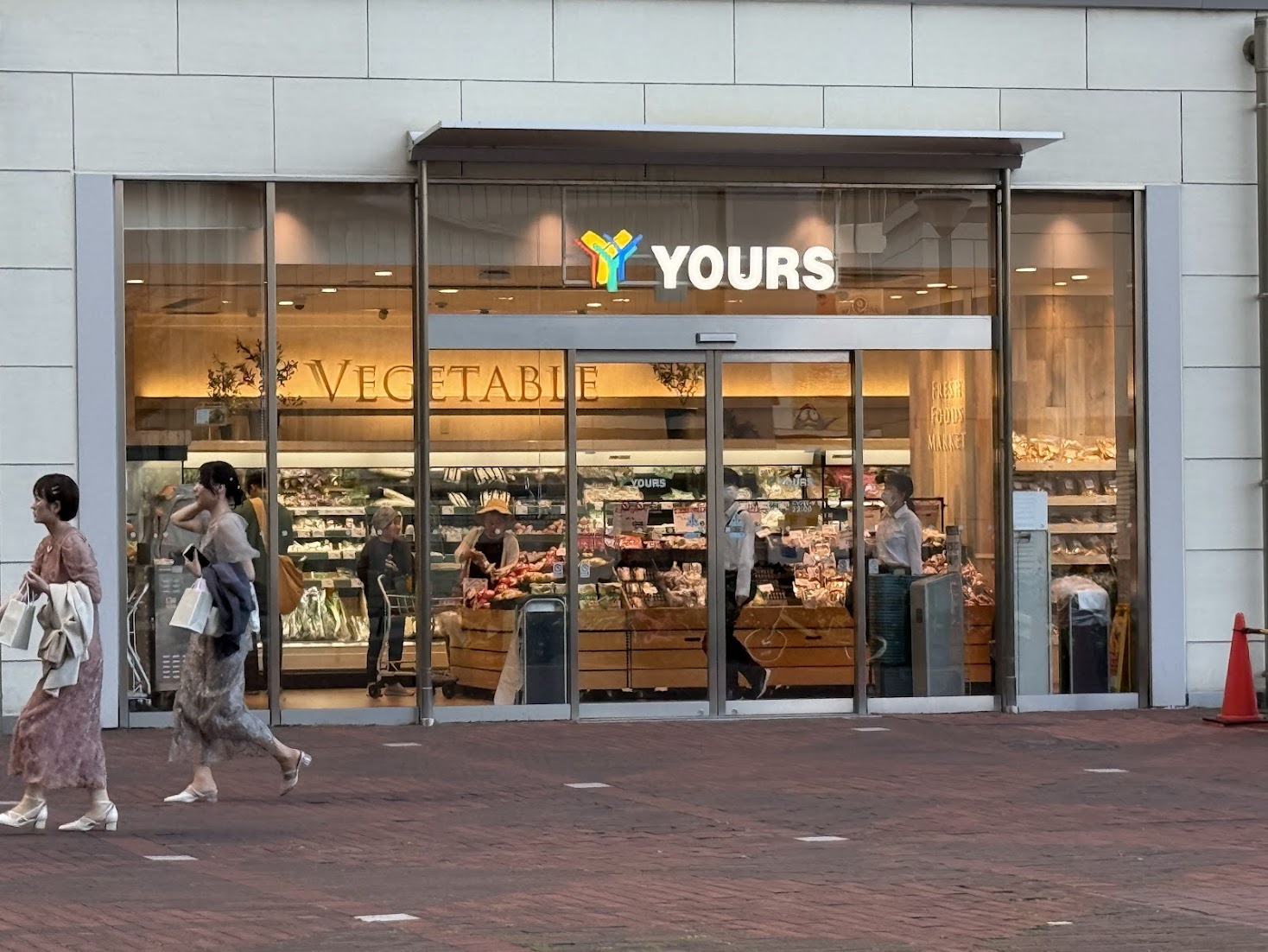
This is the "Yours" supermarket right next to our hotel, where we picked up fruits and snacks.

"Yours" had these roasted sweet potatoes, which were kept warm on heated pebbles.
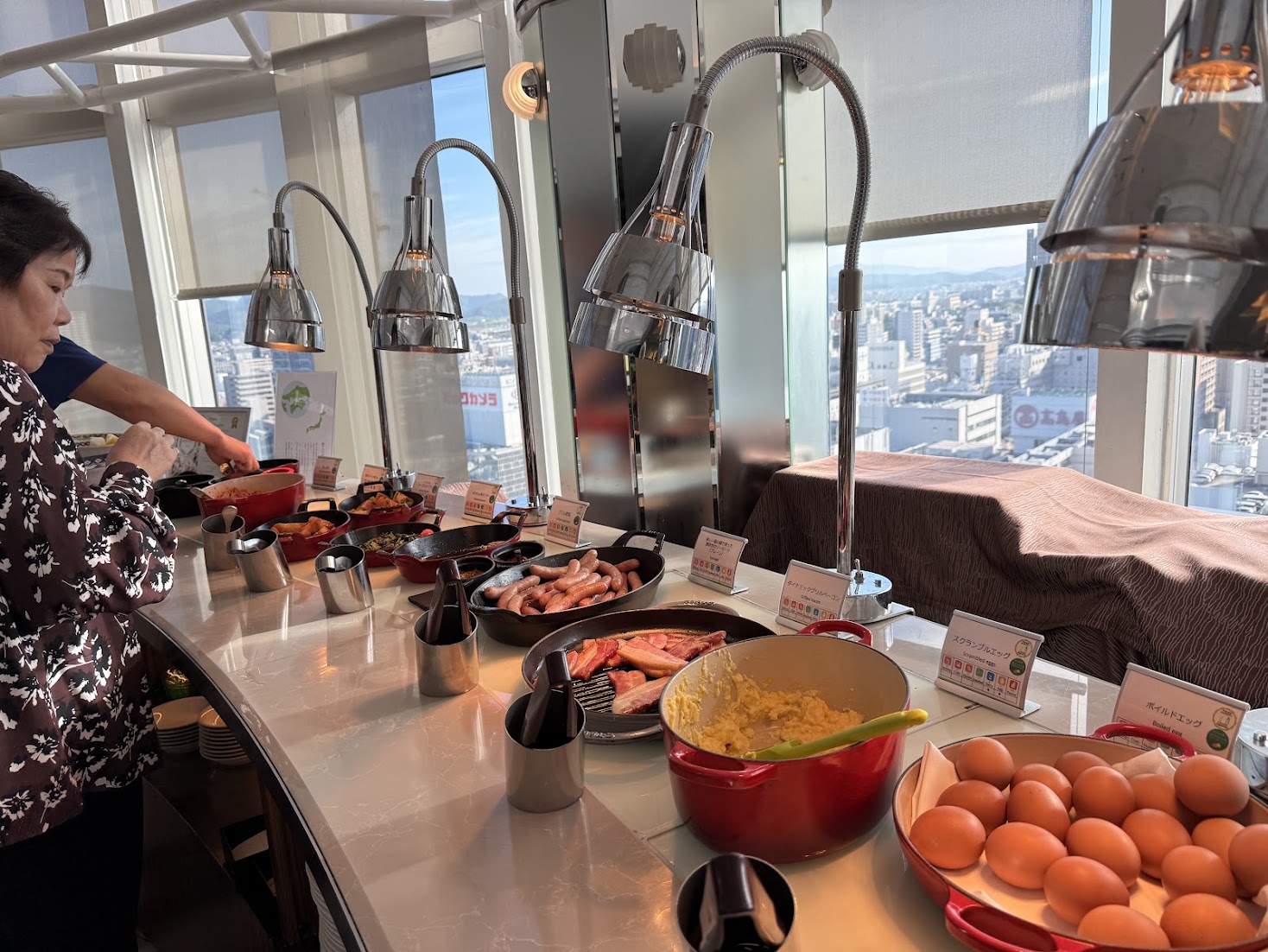
Granvia's "Premium Breakfast Buffet" is served on the top (25th) floor.

At 5500 JPY (USD $36)/pp, it feels more like a special occasion treat than an everyday breakfast.
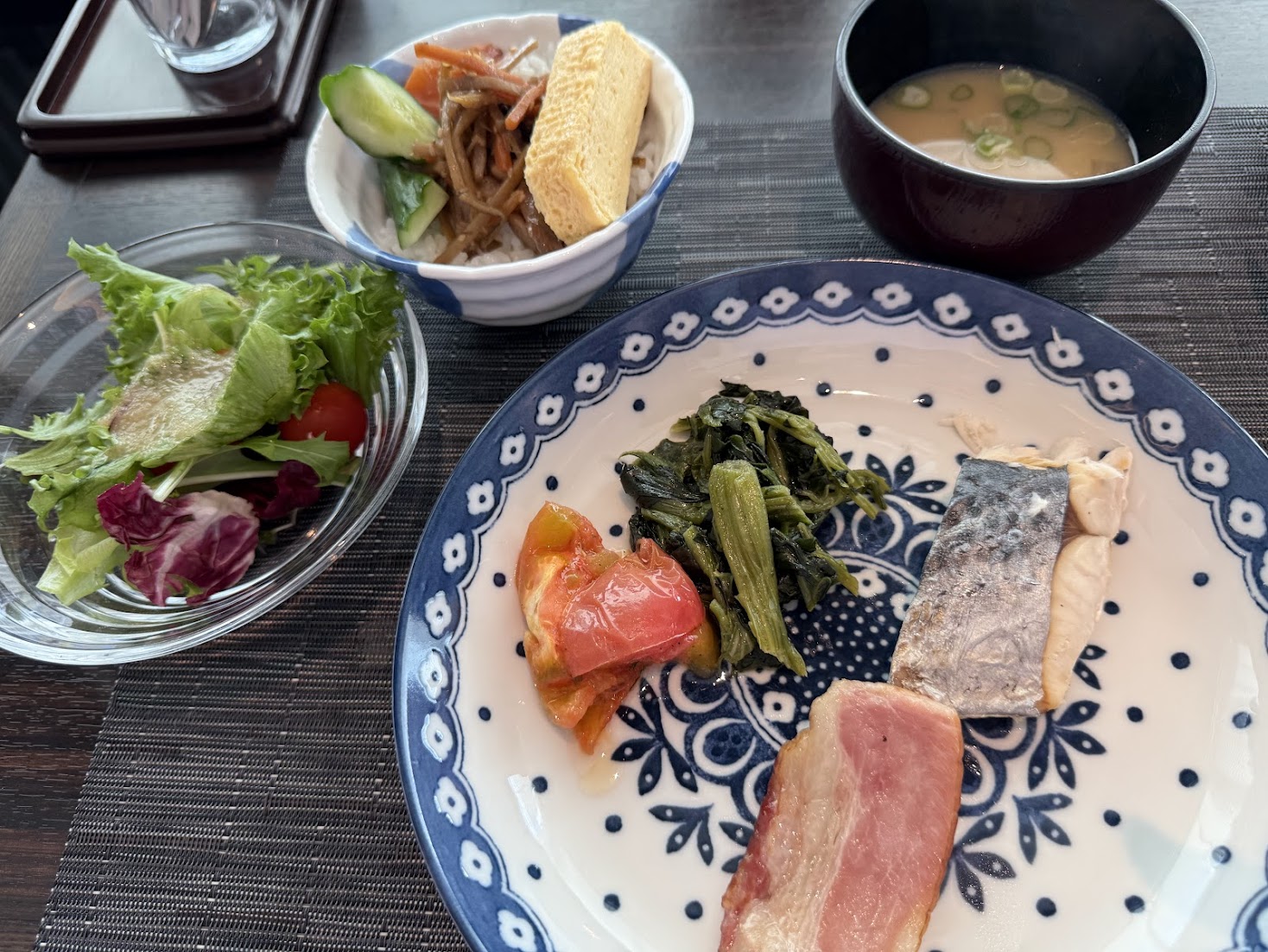
MC's selection from the breakfast buffet.

In front of the statue of Momotaro-san outside the train station.
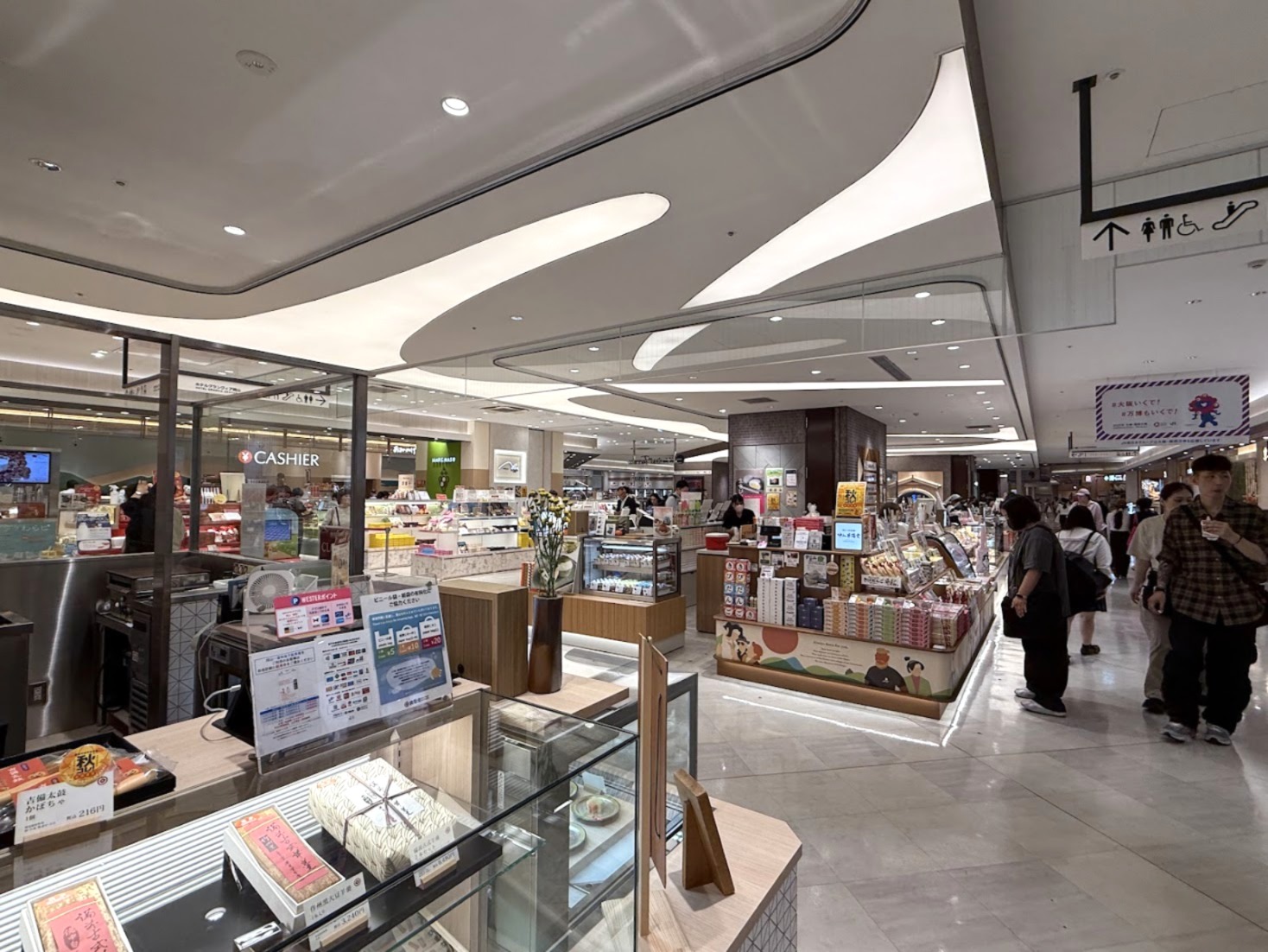
The shopping mall inside the Okayama train station.

We often had dinner at restaurants in the Okayama Station mall.
One day, we had shrimp ten-don at this Ebi-ya Tempura.
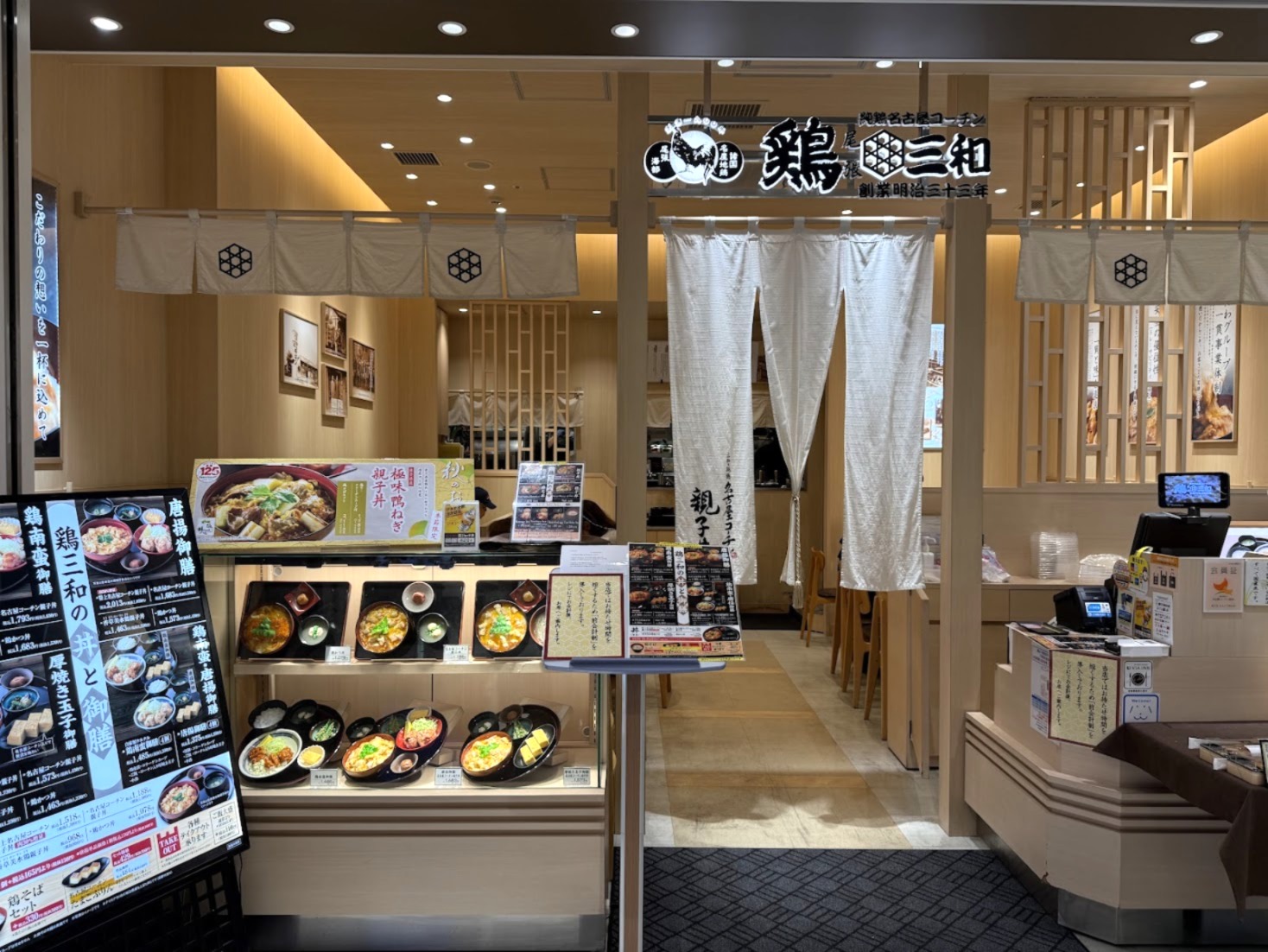
Another day, we had oyakodon (親子丼) at this chicken specialty restaurant.
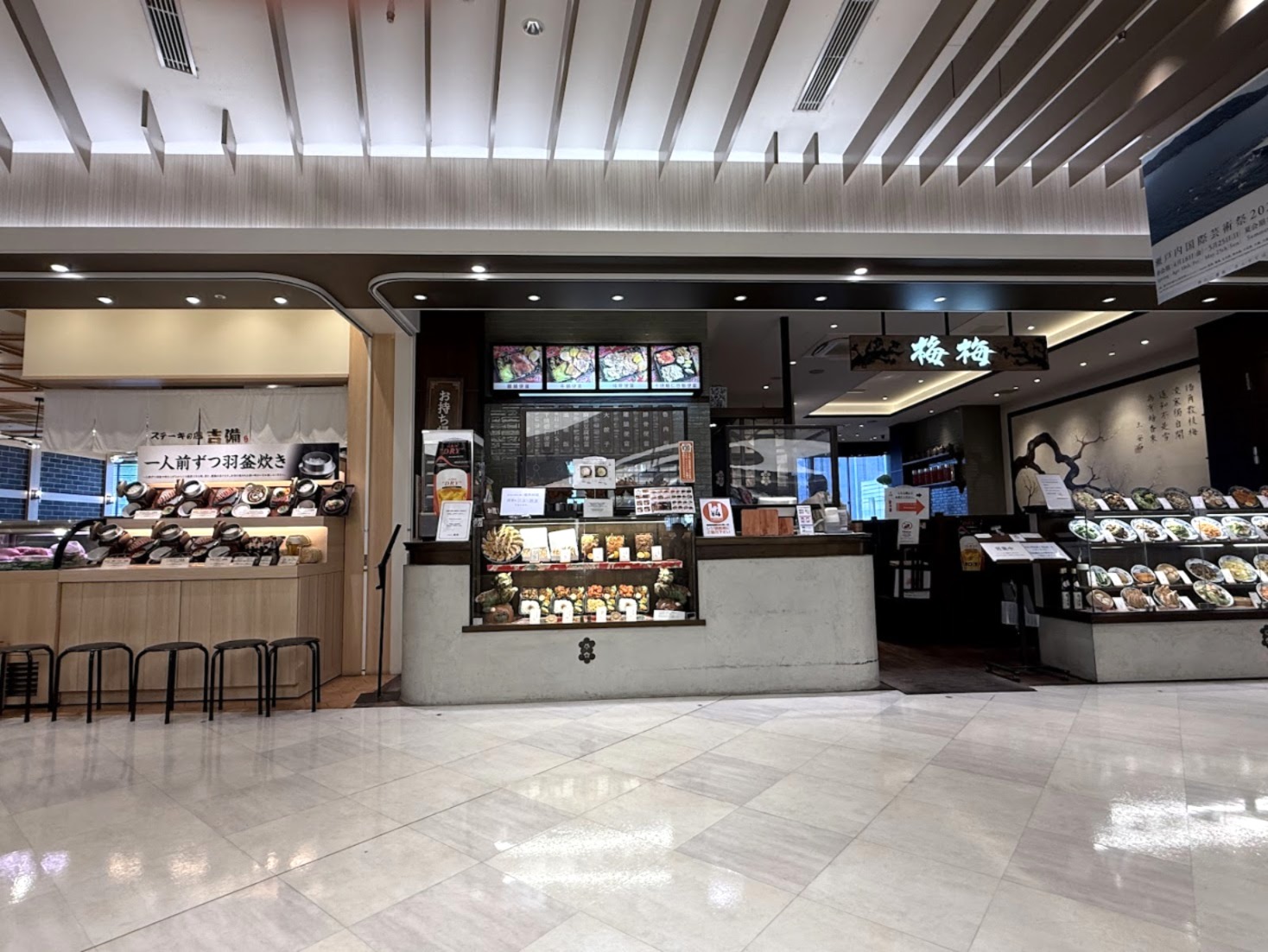
Yet another day, we had dinner at this Mei Mei Chinese restaurant.

We were attracted by Mei Mei's dish models on display.
And we did not disappoint; the dishes we ordered were sizzling hot from the
wok with
the unique smoky aroma of 鑊氣 (breath of the wok).
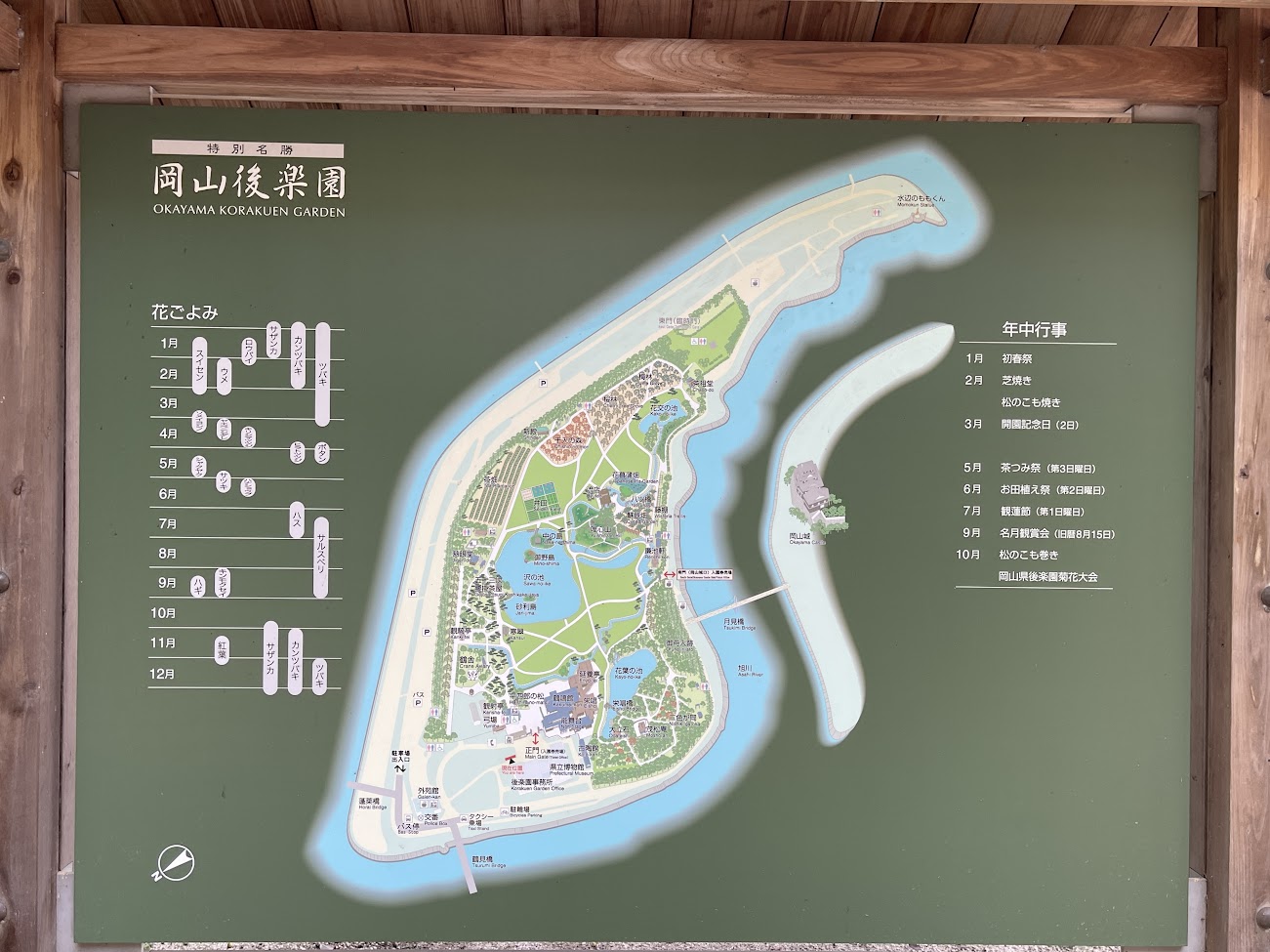
Map of Okayama's Korakuen Garden (後楽園),
construction was started in 1687 by the feudal lord of the Okayama Domain.

A large pond in the middle of the garden,
as well as streams, walking paths, lawns, and a hill.

There are three islands in the pond, housing a small building and a bridge.
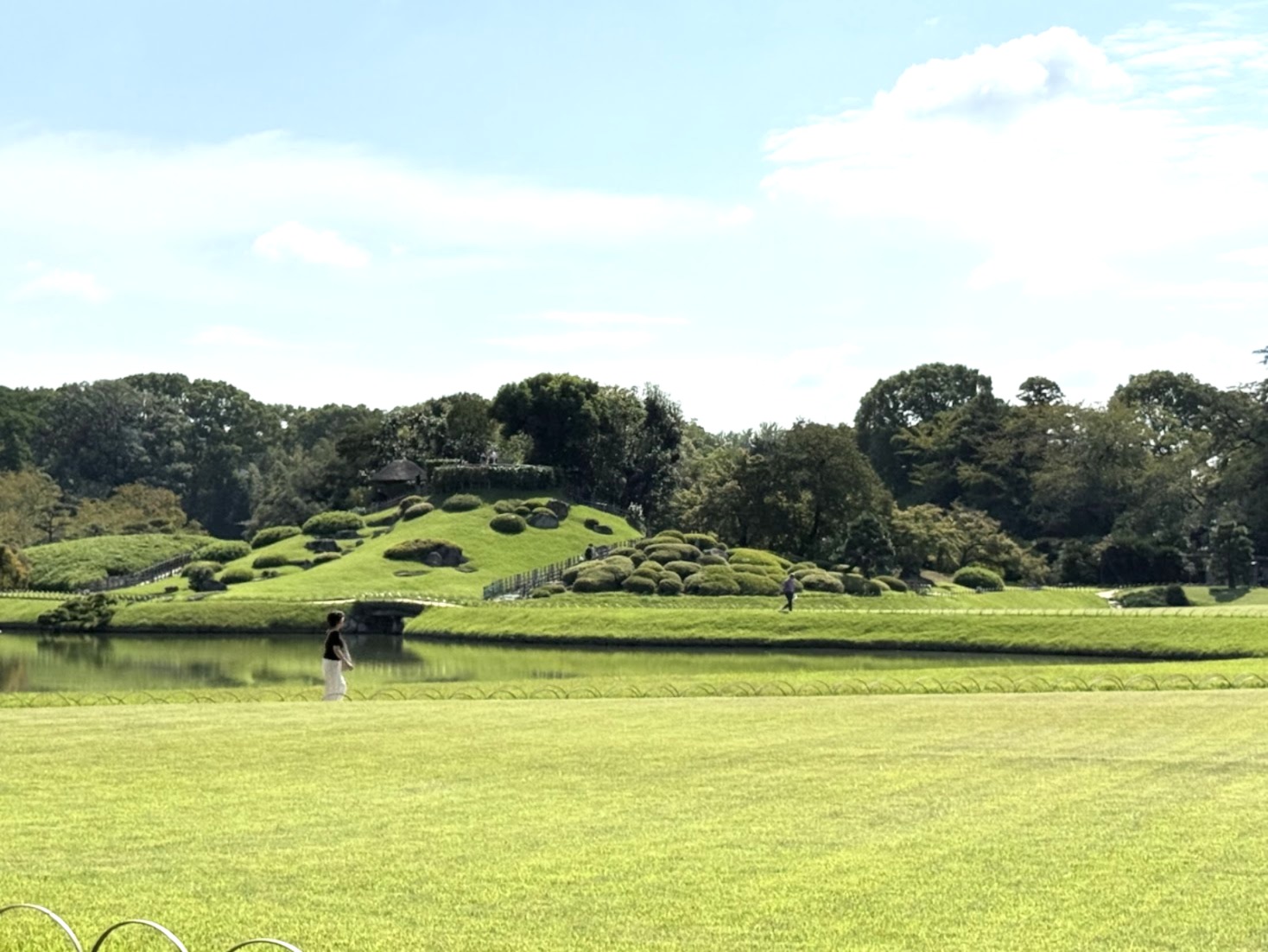
A man-made hill affords a panoramic view of the entire garden.
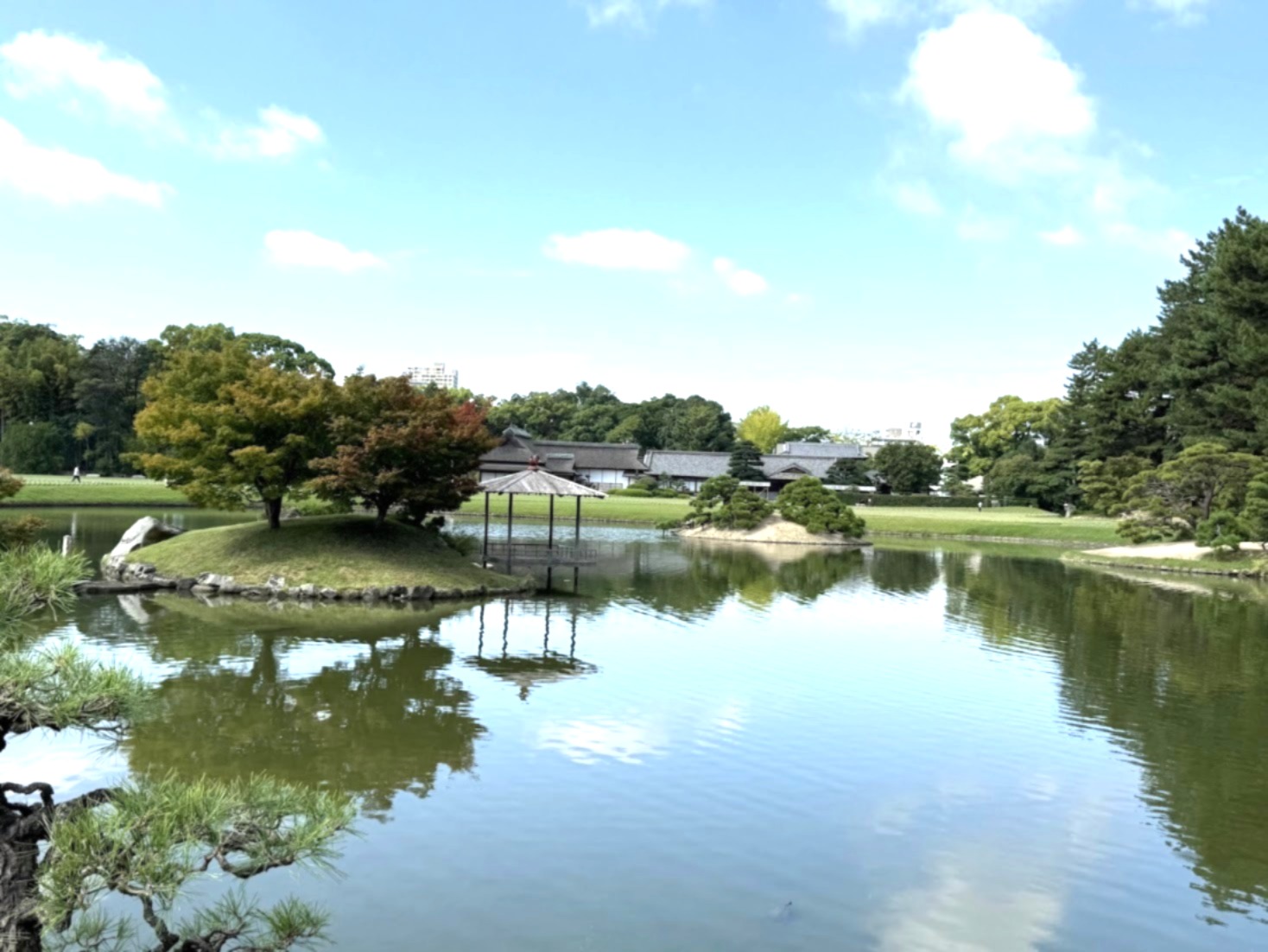
The houses located along the garden's edge served as places for the lords to relax
and entertain their guests.
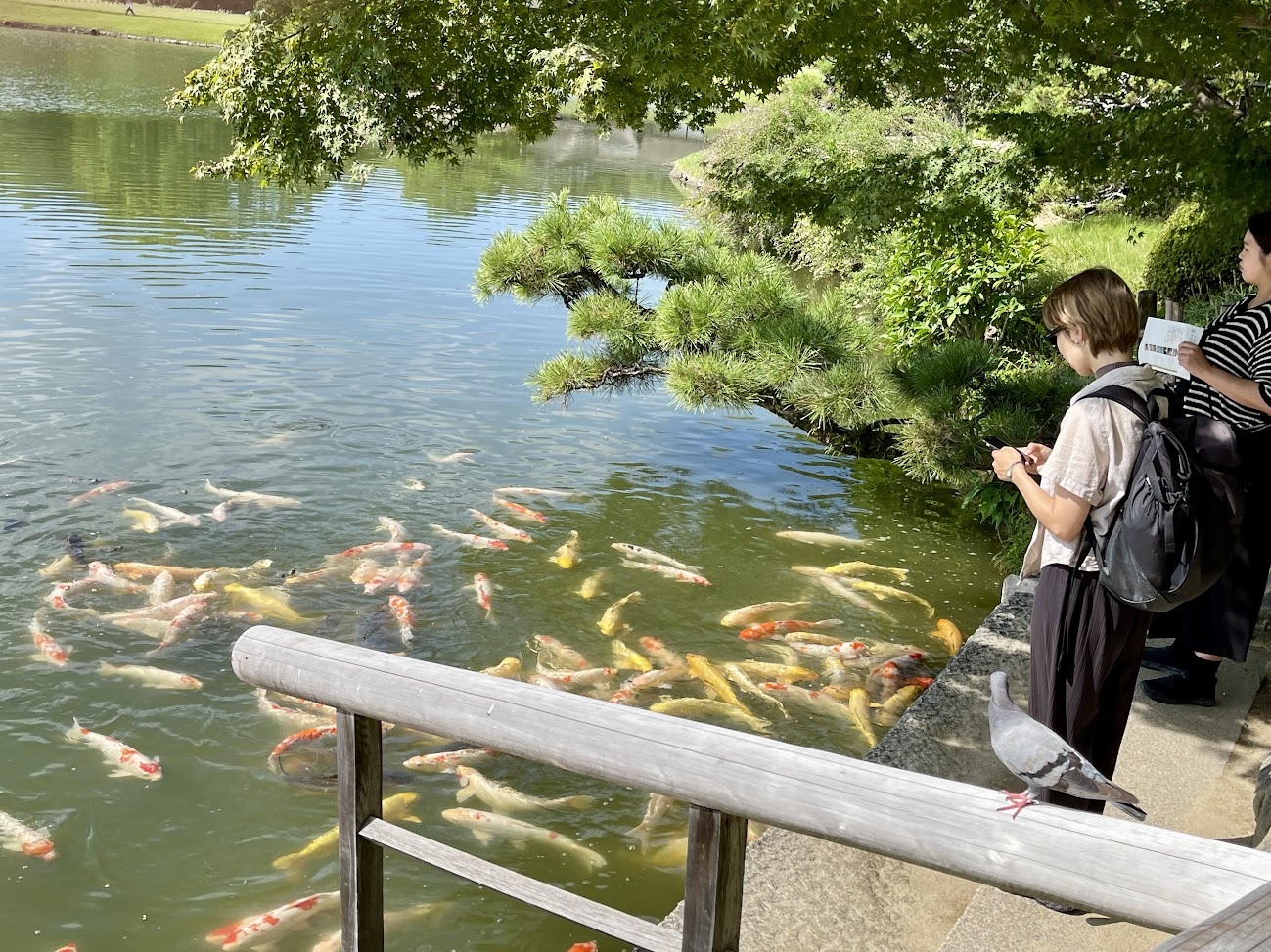
Large koi swimming in the pond.

Beyond the trees in the background, the top of Okayama Castle was visible (underneath the frame of the torii gate.)
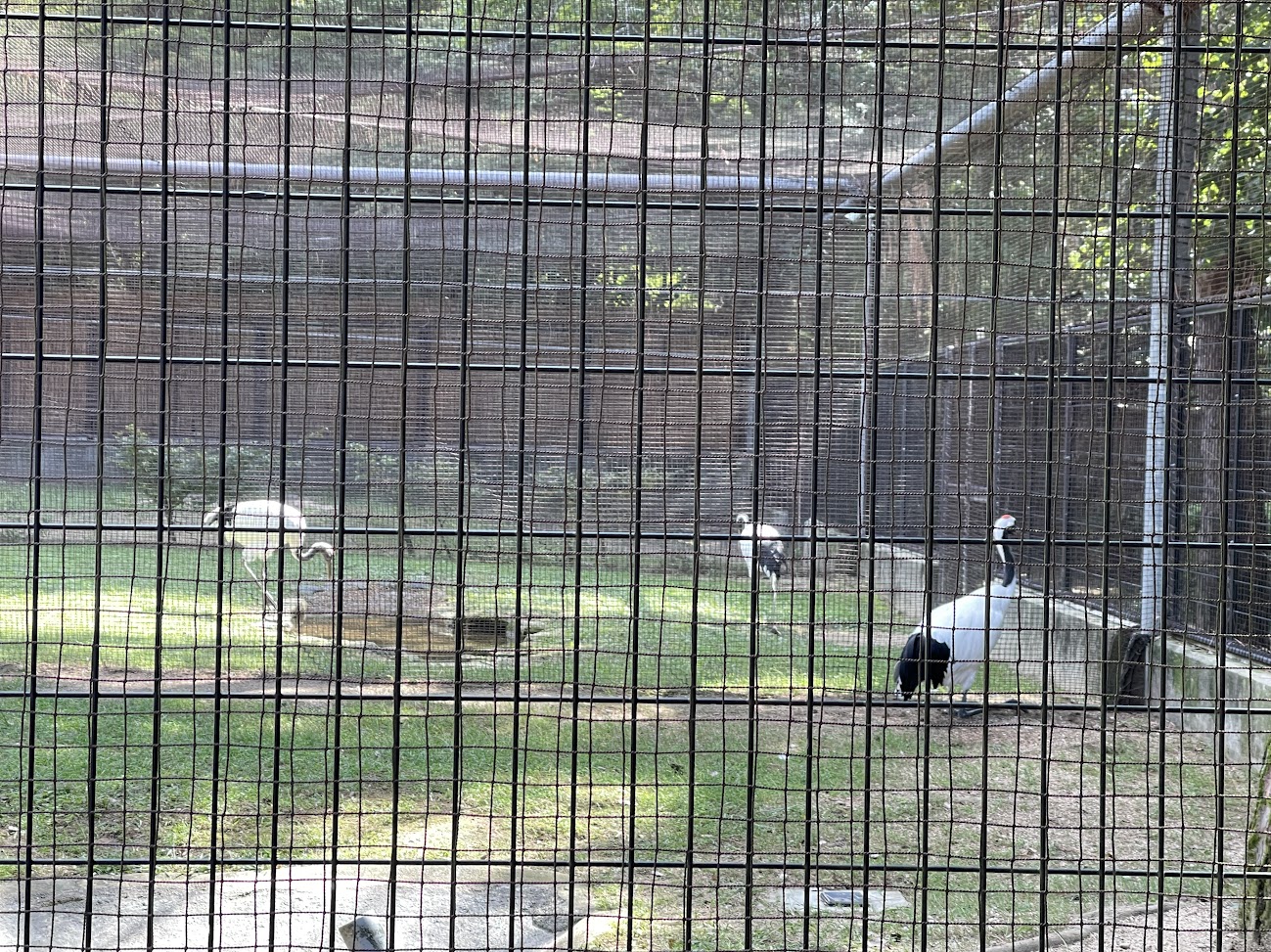
Red-crowned cranes in a corner of the garden.
Japanese people have thought the crane is a symbol of good fortune.
These cranes are left free to roam and fly in the garden twice per month from September to February,
in particular on New Year's Day.
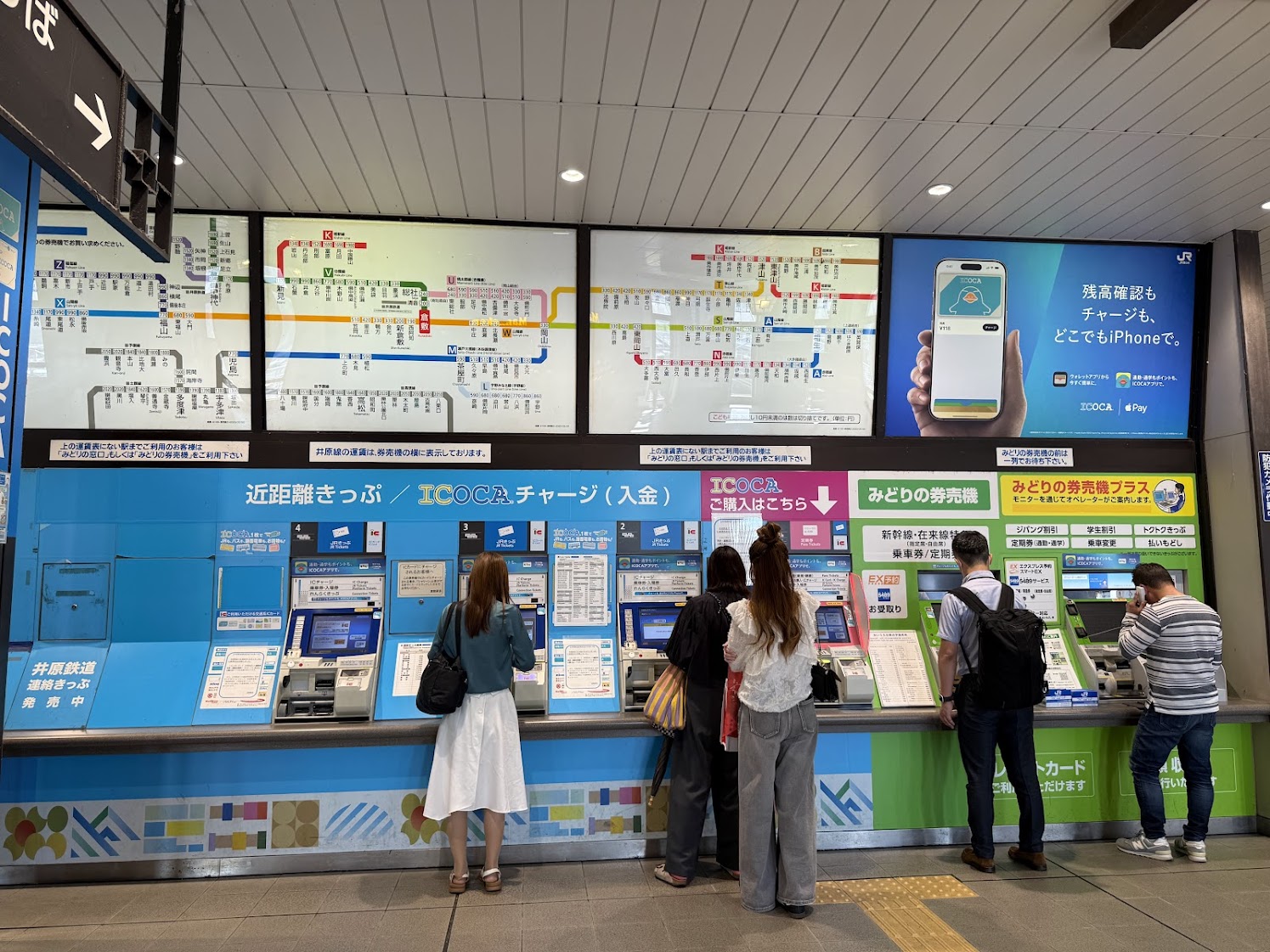
On another day, we took a local train to visit Kurashiki.
Since one of us lost his SUICA card, we had to buy a train ticket from the vending machine.
The one-way train ride took only 18 minutes and cost 330 JPY (USD $2.20).
(The machines surrounded by green color are tickets for the Shinkansen trains; the blue ones are tickets for the local trains.)
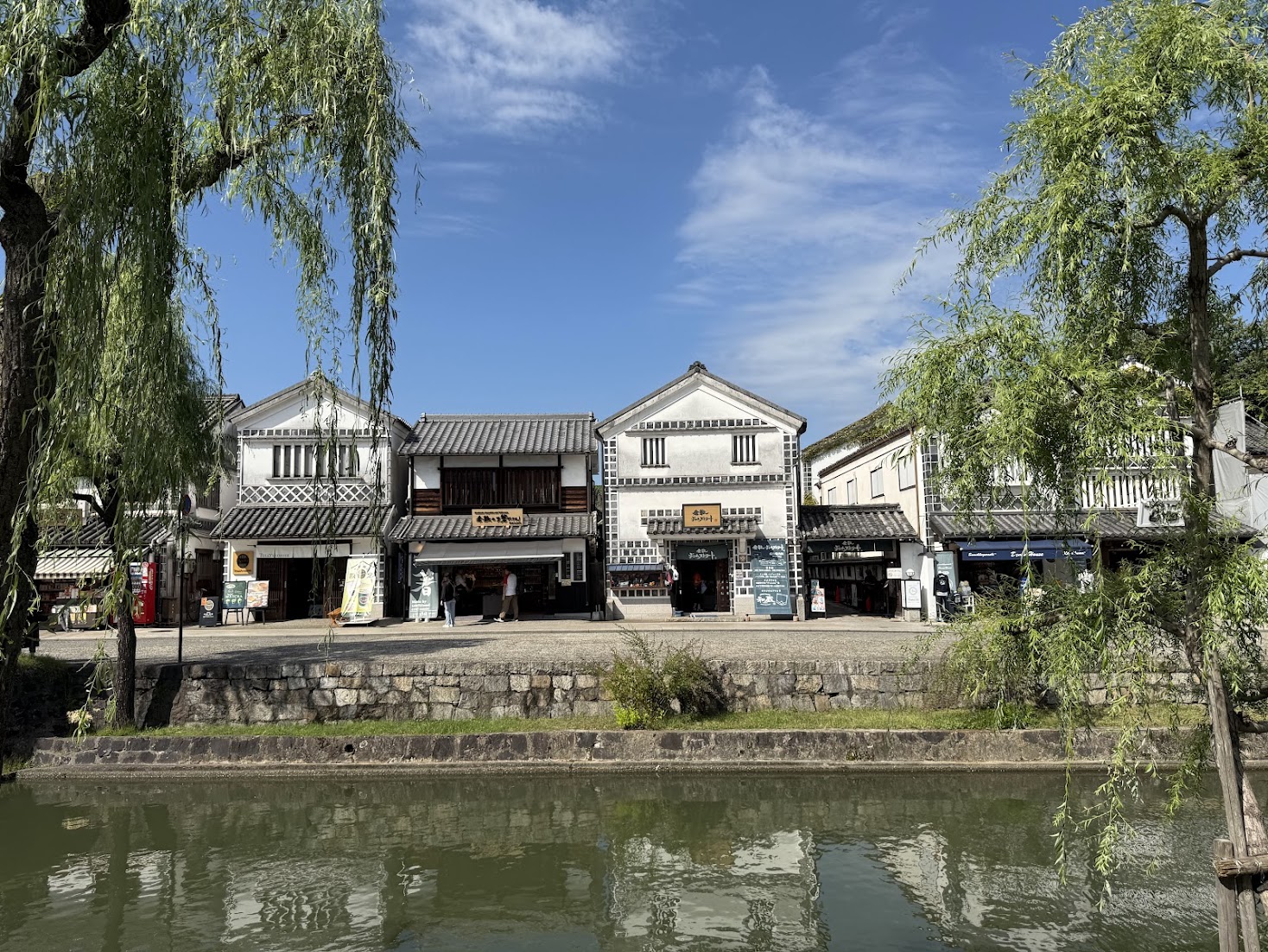
Kurashiki was one of the rice storage and distribution centers during Edo period.
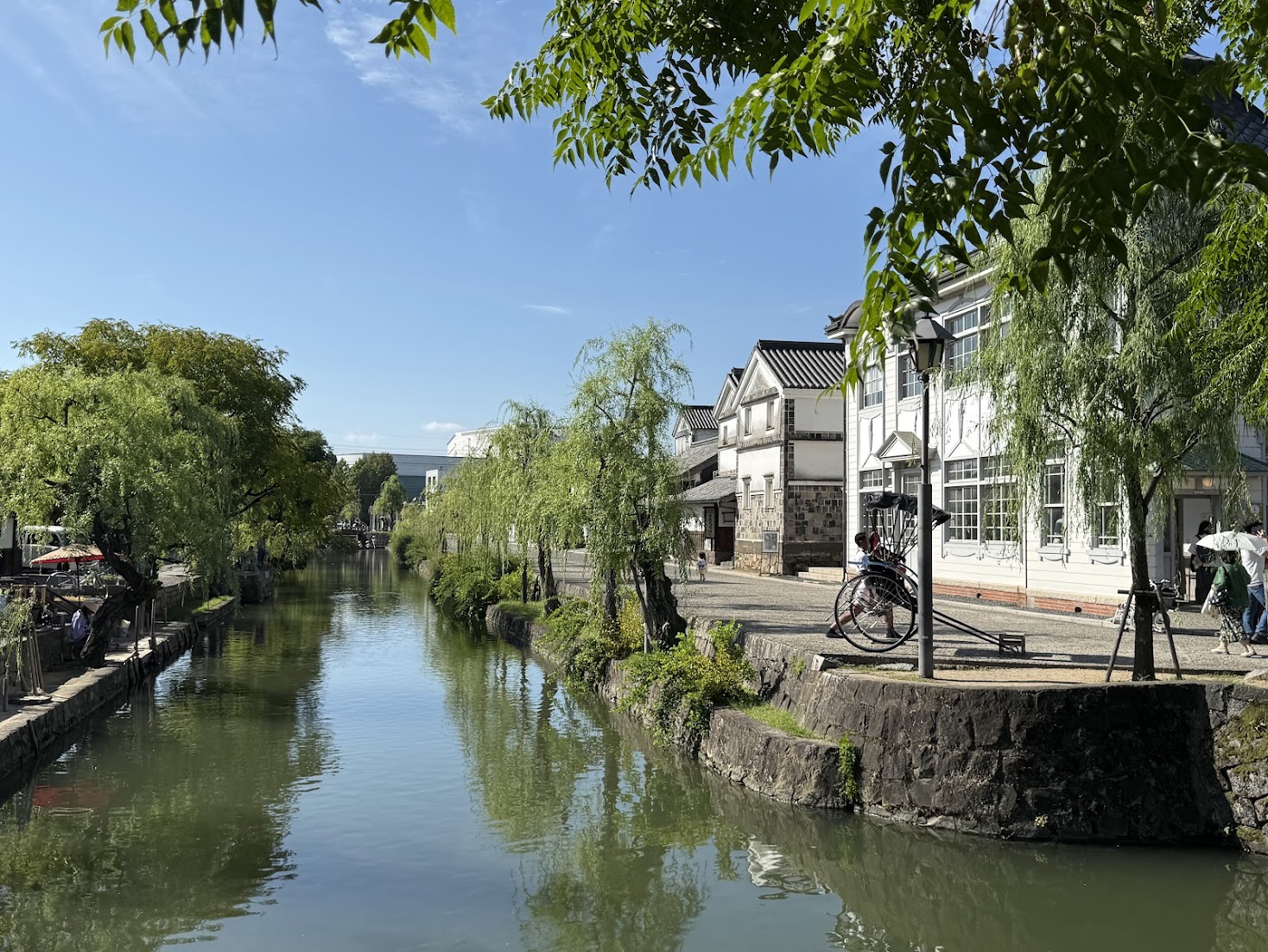
The white warehouses and the canals are preserved and become tourist attractions.

The town is connected by canals to a river, which flows to the Seto Inland Sea.
That must have been how the rice was transported in the old days.

There are two outlet malls located on the north side of the Kurashiki train station.
But only one of them, the Ario Outlet Mall, has many restautants, so we went there for lunch.
(A raised walkway connects the Ario Mall to the Kurashiki train station.)
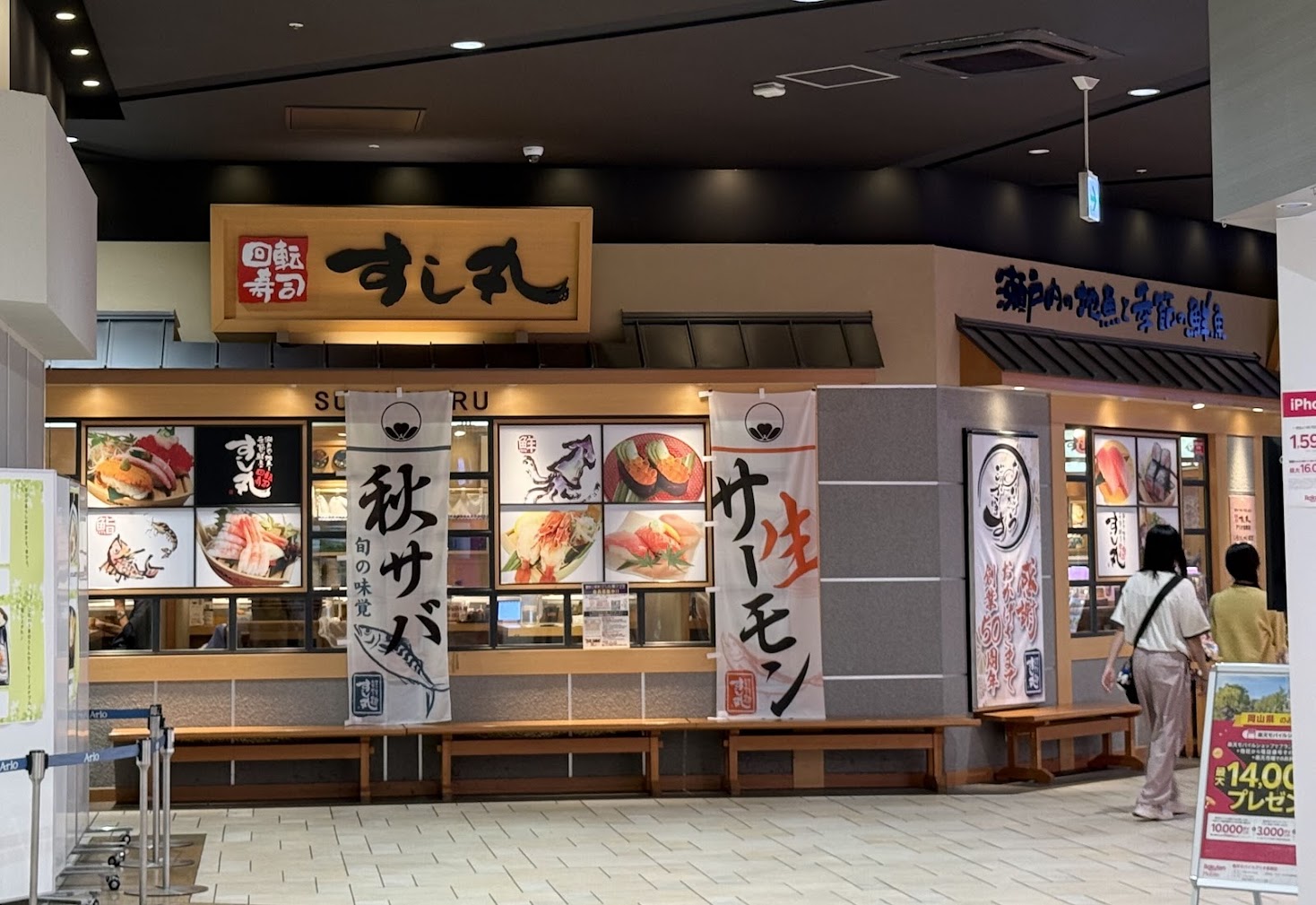
We picked this kaiten sushi restaurant, although we had not heard the name before, Sushi Maru.

We did not set any high expectations, but it turned out the food was very satisfactory.